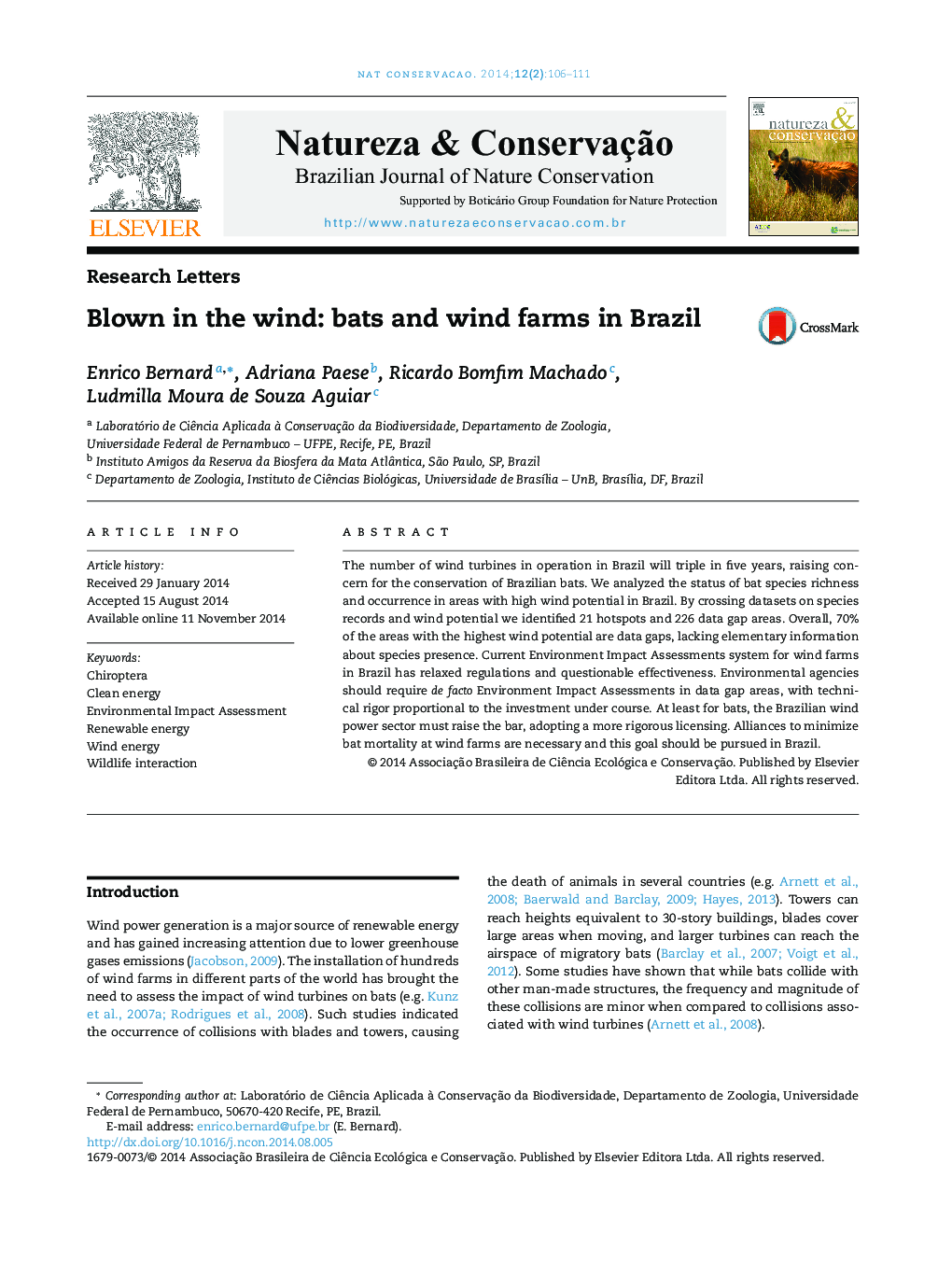| Article ID | Journal | Published Year | Pages | File Type |
|---|---|---|---|---|
| 4400805 | Natureza & Conservação | 2014 | 6 Pages |
The number of wind turbines in operation in Brazil will triple in five years, raising concern for the conservation of Brazilian bats. We analyzed the status of bat species richness and occurrence in areas with high wind potential in Brazil. By crossing datasets on species records and wind potential we identified 21 hotspots and 226 data gap areas. Overall, 70% of the areas with the highest wind potential are data gaps, lacking elementary information about species presence. Current Environment Impact Assessments system for wind farms in Brazil has relaxed regulations and questionable effectiveness. Environmental agencies should require de facto Environment Impact Assessments in data gap areas, with technical rigor proportional to the investment under course. At least for bats, the Brazilian wind power sector must raise the bar, adopting a more rigorous licensing. Alliances to minimize bat mortality at wind farms are necessary and this goal should be pursued in Brazil.
